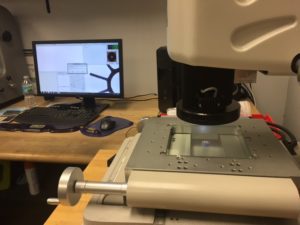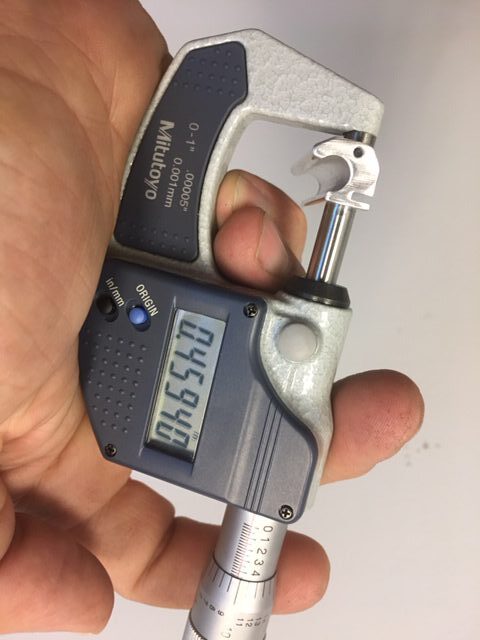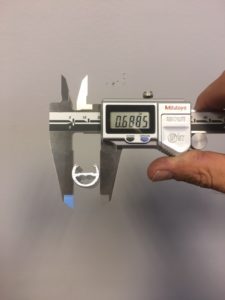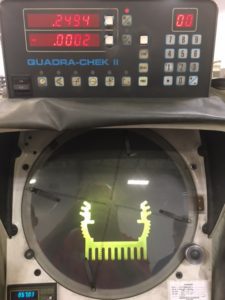A very important part of the aluminum extrusion production and quality assurance process is verifying the parts we manufacture meet the dimensional requirements of the customer. Components that are manufactured properly and within tolerance ensure the products are easy to assemble, work as the designer intended, and are reliable. Some of the tools we use to inspect our aluminum tubing and extruded shapes, such as micrometers and calipers, can be found in any machine shop. Other tools like comparators and optical vision systems are used by companies manufacturing components for aviation and medical device component industries. We also have tools that can’t be found anywhere else. These are typically go/no-go gages, or check fixtures, developed for specific customer requirements. Let’s look at a few of the aluminum extrusion inspection tools in greater detail.
A micrometer is a gage used to measure the wall thicknesses or the distance between two faces. Digital micrometers typically can measure down to the fifth decimal place, and analog ones can measure down to the fourth decimal place. They’re a quick, easy and accurate method to measure and they are the preferred tool for accuracy when using a hand-held device.
A caliper is a device used to measure the distance between two opposite sides of an object. A caliper typically can measure distances much larger than a micrometer and it’s a versatile tool that can measure many different dimensions. For example, it can be used to measure a tube OD, Tube ID, wall thickness, and space dimensions between walls. A caliper can also be used to measure the length of a part which has been cut. It’s accurate to the third decimal place.
An optical comparator uses a magnified silhouette of an extrusion that is projected upon the screen and the dimensions of the part are measured. The part can be measured using a graduated screen or an overlay of the part itself. A comparator is more versatile than a micrometer or caliper in that you can measure angles, radii, and other geometric tolerances that cannot be measured with hand tools. They are accurate to the fifth decimal place. Sample preparation is extremely important for accurate measurements.
A digital vision inspection system’s resolution and accuracy is 10 times higher than the traditional Optical Comparators found in many extrusion plants and machine shops. Because it’s a camera, the actual features, rather than a shadow, is measured. Unlike the optical comparator it has the ability measure depth as well 2-D dimensions. The digital vision inspection system performs inspections for out of tolerance conditions based upon a CAD file.

Special tools can also be utilized when necessary. Go/no-go gages are a simple way to check tubing inside diameters and gaps between walls. Standards can be developed with the customer to allow for the inspection of cosmetic surfaces. Generally, with special tools, the supplier and the customer each have a tool and an agreed upon method for using them.
Call us today and find out how we can help you lower your overall costs, increase quality, and save time. Profile Precision Extrusions would love to help with your unique challenge!






